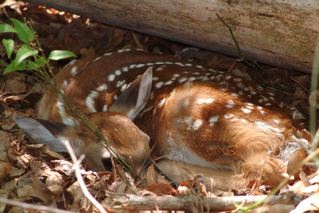On May 1, a good friend and well-known Athens birder, David Galewski, died suddenly. He will be greatly missed by the Athens birding community, as well as by colleagues and friends in Athens, and at the University of Georgia, where he was a professor of mathematics. Over the past six years, I went birding often with David, including several memorable field trips to different areas along the coast of Georgia and South Carolina, the North Georgia mountains, the Gulf Coast of Florida and other destinations. Our annual field trips to the coast over Martin Luther King weekends each January, with birding friends from the Oconee Rivers Audubon Society, had become a tradition.
For several years he served as field trip chair for the Oconee Rivers Audubon Society, and in this position he was uncommonly generous in sharing his knowledge and giving huge amounts of his time and energy to help others.
I first met David in 2001, when I interviewed him for a magazine article about birdwatching. In that interview, I asked him why he liked birds so much and why he liked birding, and this is what he said:
“One reason I love birding so much is that birds represent a microcosm of life. Not only are birds beautiful and free and wonderful to watch, but through birds people can become attached to their destinies, and the next step is that they begin to become aware of the environment and of what’s happening to it.”
He was especially known for his knowledge of bird songs and calls, but the most important thing David brought to birding was not his amazing ability to recognize birds by ear. The real gift that he gave to those of us who birded with him was his love of the natural world, and a deep and genuine sense of wonder. He was never too cool to show his enthusiasm, not only for unusual or rare birds, but even for the most common and familiar.
His favorite birds – the ones he would really get excited about and looked forward to seeing again and again – were shorebirds – like sandpipers, plovers, seagulls, and terns. He knew them down to the smallest detail of plumage and the most obscure call, and he took delight in the unique personality of each one. He never just checked them off on a life list. Each one acquired a colorful and memorable identity, and became much more than a name or a picture. I’ll never hear the “tew-tew-tew!” of a Greater Yellowlegs, see the silvery flash of a Forster’s Tern’s wings, or hear the “pee-oo-eee” of a Black-bellied Plover, without thinking of David – and of the huge, immediate smile that filled his face whenever he encountered them again.
I can think of few gifts greater than the ones he gave to me and to many other birding friends – gifts of beauty, of music, and of living intensely in the moment.
But what I’ll remember most about David are the many times – and there were many – when we were birding together, and he would just stop and look around, and say, “Isn’t this just wonderful? We are so lucky! There’s nowhere I’d rather be than out here, enjoying the beauties of nature, and enjoying the birds.” So that’s what I’ll remember – the happiness and joy he found in the natural world, especially in birds, and the pleasure he took in sharing that joy with others.
